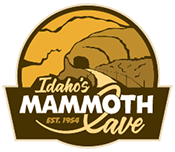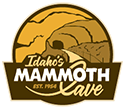“Boise Foothills” by j.a.woodhouse is licensed under CC BY 2.0.
The Boise Foothills stretch magnificently from the city of Eagle to the north, reaching down to Lucky Peak Reservoir in the south, creating a natural wonder that forms the backdrop of Boise and its surrounding areas. These foothills, lying at the edge of the great Rocky Mountains, offer a picturesque canvas where the wilderness meets urban convenience, providing one of the most accessible urban recreation areas in the West. With their rolling, pine-dusted terrain, the Boise Foothills encapsulate the essence of Idaho’s stunning landscapes, inviting visitors to explore nearly 200 miles of trails that weave through the Ridge to Rivers system.
Exploration at Your Doorstep
Access to the Boise Foothills is remarkably easy, with numerous entry points scattered around the area, making it a perfect day trip for anyone looking to immerse themselves in nature without venturing far from the city. Camel’s Back Park is a popular starting point, named after the unique humpback hill that offers panoramic views of Boise against a mountainous backdrop. For adventurers and nature lovers, the park’s trails lead into Hulls Gulch Reserve, presenting diverse opportunities from leisurely picnics and bird watching to more vigorous hiking and biking paths that cater to all levels of experience.
A Window to Natural History
Further enhancing the appeal of the Boise Foothills is the Foothills Learning Center, nestled within Hulls Gulch. The center aims to educate visitors on the natural history of the area, offering a serene setting for picnicking in the Native Plant Garden or wandering the self-led Story Trail. Similarly, the historic Military Reserve, once a site for military exercises, now offers tranquil trails through nature, showcasing the area’s ability to blend historical significance with natural beauty.
Iconic Landmarks
The most renowned trail in the Boise Foothills leads to Table Rock, a towering mesa that dominates the city’s skyline, marked by a 60-foot neon cross. This landmark, a remnant of the ancient Lake Idaho, offers hikers sweeping views of the city and a tangible connection to the region’s geological past. The ascent to Table Rock, though steep, rewards with unforgettable sunsets, making it a must-visit for anyone exploring Boise.
Diverse Recreational Opportunities
The Boise Foothills are a testament to the variety of recreational activities available in Idaho’s landscapes. From serene picnic spots and easy walking paths to challenging hikes and bike trails, the foothills cater to every interest and skill level. The area is a hotspot for bird and wildlife watching, with wildflowers blooming in spring and early summer, adding to the allure of the natural environment.
Preserving Natural Beauty
The existence of the Boise Foothills as a recreational haven is intertwined with efforts to preserve its beauty and ecological significance. The area’s diverse terrain, from the valley floor’s arid lowlands to the coniferous peaks of Boise Ridge, highlights a unique transition zone rich in native flora and fauna. Conservation efforts aim to protect this delicate ecosystem, ensuring that the foothills remain a pristine outdoor space for exploration and enjoyment.
A Legacy of Open Spaces
The Boise Foothills stand as a cherished natural asset, reflecting the importance of preserving open spaces for the enjoyment and well-being of all who visit. The Foothills Open Space Plan emphasizes protecting native vegetation, important wildlife habitats, and creating opportunities for a multitude of outdoor activities, thereby leaving a lasting legacy for future generations.
The Boise Foothills – A Beautiful Place to Visit in Idaho
The Boise Foothills offer a remarkable blend of beauty, history, and geography, serving as a gateway to the great outdoors right on the doorstep of urban convenience. With its easy access, diverse trails, and commitment to conservation, the Boise Foothills embody the spirit of Idaho’s natural landscapes, inviting visitors to discover the serene beauty and rich history embedded within its rolling hills and scenic vistas.
Quick Facts About the Boise Foothills
- The Boise Foothills stretch from Eagle in the north to Lucky Peak Reservoir in the south, serving as a scenic backdrop to Boise and offering over 190 miles of trails for urban recreation.
- The area has a layered history, including the Military Reserve, which was used for military exercises from 1863 through the 1940s, highlighting the Foothills’ transformation from a military training ground to a recreational haven.
- With numerous entry points around Boise, the Foothills feature trails ranging from easy walks in areas like Hulls Gulch Reserve to challenging hikes up to Table Rock, accommodating all levels of outdoor enthusiasts.
- The Foothills Learning Center, situated in Hulls Gulch, provides insights into the natural history of the Foothills, enhancing visitors’ understanding and appreciation of the area’s ecology and conservation.
- Table Rock, an easily recognizable mesa due to its 60-foot neon cross, offers panoramic views of Boise and is a popular destination for both its challenging hike and the historical significance of the area.
- Efforts to protect the Boise Foothills include preserving native vegetation and important wildlife habitat, emphasizing the community’s commitment to maintaining the area’s natural beauty and ecological integrity for future generations.
Idaho’s Mammoth Cave
Planning a trip to Idaho? Don’t forget to put Idaho’s Mammoth Cave at the top of your list. As one of the most beautiful places to visit in Idaho, you can explore a unique and awe-inspiring underground landscape at your own personal pace with our self-guided tours. In addition to the cave, there are two privately owned museums of natural history on-site, the Shoshone Bird Museum and the Richard Arthur Olsen Museum featuring a wealth of exhibits that has earned them nickname “The Smithsonian of the Desert,” making it an unforgettable stop for the whole family.
Located eight miles north of Shoshone, Idaho, on Highway 75, Idaho’s Mammoth Cave will be open for seasonal tours from May – October, from 10 a.m. to 6 p.m., 7 days a week, including all major holidays. For more information, visit idahosmammothcave.com or call (208) 329-5382.








